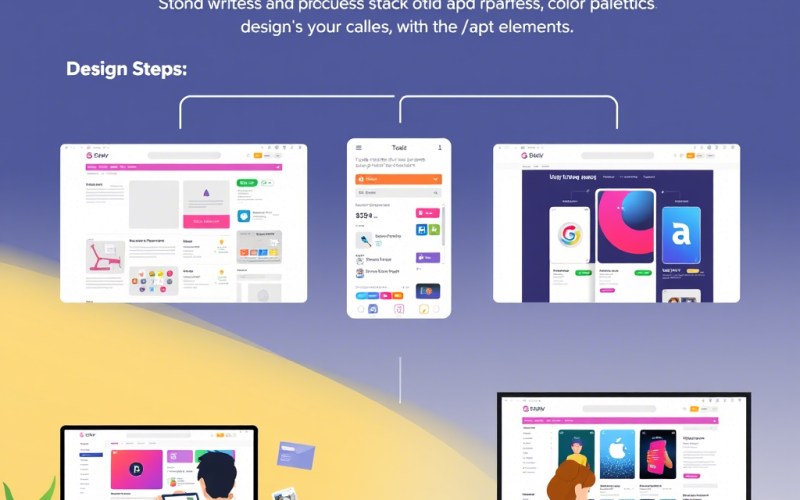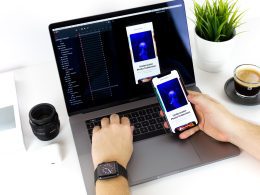Introduction
In the bustling world of mobile apps, standing out is a challenge every developer faces. Your app’s presentation on platforms like Apple’s App Store or Google Play can make or break its success. This is where a well-designed App Store Theme comes in. A high-converting App Store theme boosts visibility, engages users, and drives downloads. In this detailed guide, we’ll walk you through the process of crafting a theme that turns browsers into users, step by step, with actionable strategies and insider tips.
What Defines an App Store Theme?
An App Store theme encompasses the visual and textual elements that represent your app on a digital storefront. Think app icons, screenshots, videos, descriptions, and reviews—all working together to create an inviting first impression. It’s your app’s pitch to potential users, and getting it right is crucial for success.
Why Does a High-Converting Theme Matter?
A high-converting theme doesn’t just look good—it persuades users to hit the download button. It’s about blending aesthetics with functionality to showcase your app’s value. With millions of apps vying for attention, a theme optimized for conversions can elevate your app above the competition.
How Do Users Decide Which Apps to Download?
User behavior in app stores is driven by snap judgments. They scan visuals, skim text, and rely on cues like ratings or familiarity. Understanding these habits—such as the importance of a striking first glance or the trust built by positive feedback—helps you design a theme that resonates with your audience.
Essential Components of a Winning App Store Theme
A successful theme hinges on several key pieces:
- App Icon: Your app’s visual signature.
- Screenshots: Snapshots that highlight features.
- Videos: Dynamic previews of your app in action.
- Description: A compelling pitch in words.
- Social Proof: Ratings and testimonials that build credibility.
Each element needs careful attention to create a cohesive, persuasive package.
How to Create a Standout App Icon?
Your app icon is your brand’s tiny billboard. Here’s how to make it pop:
- Simplify the design: A clean, bold image cuts through the noise.
- Pick impactful colors: Bright or contrasting hues grab attention (e.g., red for urgency, blue for trust).
- Reflect your app’s purpose: A fitness app might use a dumbbell, while a music app could feature a note.
- Test at small sizes: Ensure clarity even when scaled down.
Why Do Screenshots and Videos Boost Downloads?
Visuals like screenshots and videos give users a glimpse of what’s in store. They’re your chance to showcase functionality and spark interest. Use high-resolution images with annotations to point out benefits, and keep videos short (under 30 seconds) yet engaging—think of them as mini commercials for your app.
How to Craft a Description That Converts?
Your app description is your sales pitch. To make it irresistible:
- Lead with value: Start with why users need your app.
- Be concise: Aim for 2-3 sentences per point.
- Weave in keywords: Boost discoverability with terms like “productivity tool” or “fitness tracker.”
- End strong: A call-to-action like “Download now for free!” seals the deal.
What’s the Secret to Device-Friendly Design?
Your theme must shine across phones, tablets, and even foldable screens. Preview your visuals on multiple devices to ensure consistency. Optimize image sizes for fast loading, and avoid tiny text that’s hard to read on smaller displays. A seamless experience keeps users engaged.
How Do Ratings and Reviews Shape Perceptions?
High ratings signal quality, while reviews offer real-world validation. A study by Apptentive found that apps with 4+ stars see significantly higher download rates. Prompt happy users to rate your app after a positive experience—like completing a level or achieving a goal—to build this trust factor.
Can Social Proof Elevate Your Theme?
Absolutely. Adding snippets like “Loved by 1M+ users” or a glowing user quote can sway undecided visitors. If your app has media mentions or awards, flaunt them subtly in your visuals or description to amplify credibility.
Why Should You A/B Test Your Theme?
A/B testing pits two versions of your theme against each other to see what works best. Test variables like icon styles, screenshot order, or description phrasing. Tools like SplitMetrics can track which option drives more downloads, giving you hard data to refine your approach.
What Mistakes Can Sabotage Your Theme?
Steer clear of these traps:
- Overloading visuals: Too many elements confuse users.
- Exaggerating claims: Misleading screenshots erode trust.
- Skipping updates: Outdated themes feel stale.
- Ignoring feedback: User complaints can highlight fixable flaws.
What Can We Learn from Top App Store Themes?
Take inspiration from chart-toppers. Apps like Notion use minimalist icons and clean screenshots to convey simplicity, while Headspace employs calming visuals that match its mindfulness focus. Study these examples to see how design aligns with brand identity.
Which Tools Simplify Theme Design?
Streamline your process with these resources:
- Figma: For mocking up icons and screenshots.
- Sensor Tower: For keyword insights and competitor analysis.
- Previewed: To create polished mockups of your theme.
These tools save time and elevate your design quality.
What’s Next for App Store Theme Innovation?
The future promises exciting shifts. Imagine AR previews letting users “try” your app virtually, or AI tailoring themes to individual preferences. Keeping an eye on these trends ensures your app stays ahead of the curve.
Conclusion: Building Your Path to Success
Crafting a high-converting App Store Theme is both an art and a science. It demands a blend of eye-catching design, user-focused content, and ongoing refinement. From a bold app icon to persuasive screenshots and a polished description, every detail counts. Test your ideas, learn from top performers, and adapt to emerging trends. With these steps, you’ll create an App Store Theme that not only captures attention but turns curiosity into downloads.












